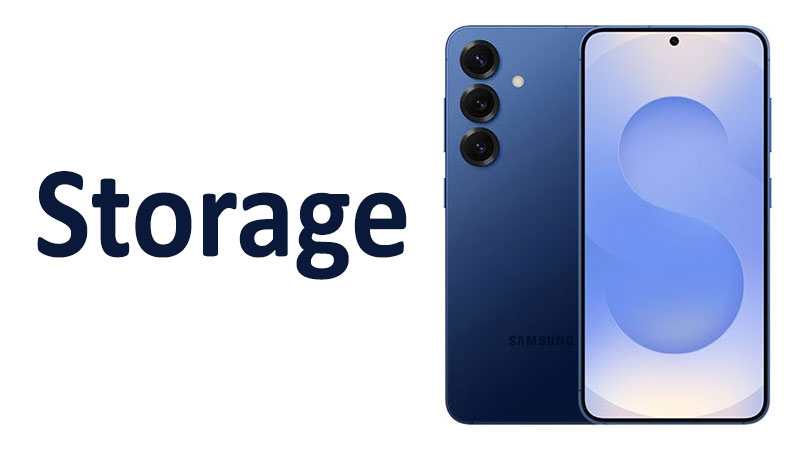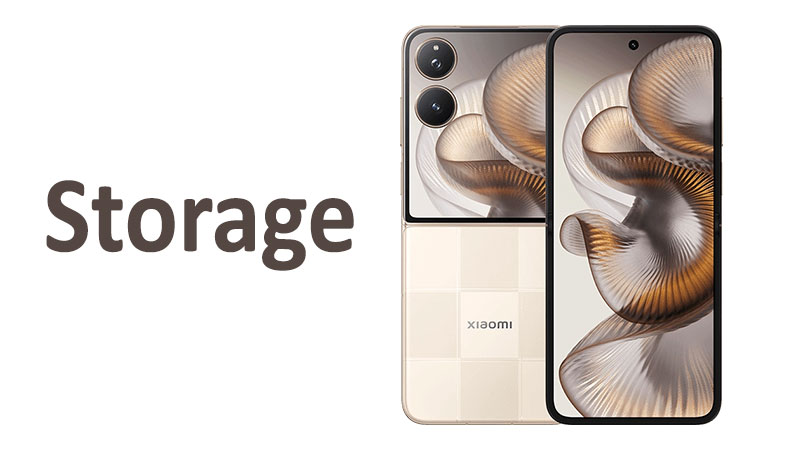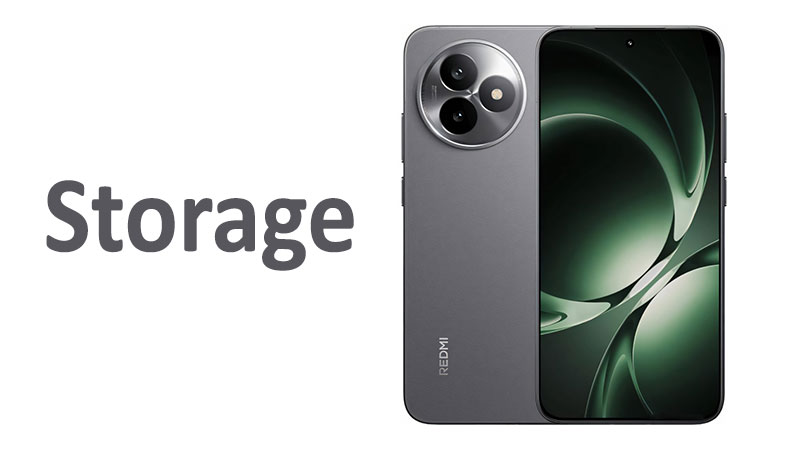Samsung Galaxy S25 storage is a critical consideration for any buyer. It dictates the overall speed and usable space of the device. This comprehensive guide reviews the storage capacity and the advanced technical type used. We analyze how these features impact real-world performance. Ultimately, we help you choose the best configuration for your needs.
Samsung Galaxy S25 Storage: Core Specifications
The Samsung Galaxy S25 storage options provide a range of choices for consumers. Samsung introduced three primary storage tiers for its flagship device. These options cater to varying user demands and budgets. This strategy ensures broad market appeal.
The available storage capacities are 128GB, 256GB, and 512GB. Each capacity option is paired with a consistent amount of high-speed memory. All configurations feature a generous 12GB of RAM. This uniformity in RAM is a key performance factor across all models. It guarantees excellent multitasking capabilities.
The underlying technology for all storage tiers is UFS 4.0. This specification represents the fastest form of flash memory currently available. UFS 4.0 ensures rapid data handling and superior system responsiveness. The combination of ample RAM and cutting-edge storage technology makes the S25 exceptionally fast.
Available Storage Configurations
Samsung streamlined the offerings for the Galaxy S25 series. This simplification makes the decision process easier for most buyers. The three key storage configurations are tied to the universal 12GB RAM.
The entry-level model offers 128GB storage with 12GB RAM. This option is suitable for light users. It appeals to those who rely heavily on cloud services.
The mid-tier option provides 256GB storage with 12GB RAM. This is often considered the ideal balance for most smartphone users. It offers enough space for apps, media, and moderate content creation.
The top-tier choice is 512GB storage with 12GB RAM. This capacity targets power users and professional creators. It accommodates vast libraries of large video files and demanding games.
The consistent 12GB RAM across all tiers is notable. It ensures that performance, aside from storage space, remains uniform. This decision focuses the buyer’s choice entirely on necessary capacity.
Specialized Comparison: Capacity Trends
Samsung’s decision to offer a 128GB base model is a point of discussion. Many rival flagships start at 256GB. For example, some premium competitors have entirely phased out 128GB. This move keeps the entry price accessible for the S25.
However, 128GB can quickly feel restrictive for modern usage. High-resolution photos and 4K videos consume space rapidly. Buyers should weigh the initial savings against future space constraints. The 256GB model is generally the most future-proof starting point. This configuration aligns better with user expectations for a modern flagship phone.
UFS 4.0: The Speed Revolution
The single most important technical aspect of the Samsung Galaxy S25 storage is the adoption of UFS 4.0. UFS stands for Universal Flash Storage. This standard dramatically improves read and write speeds compared to previous generations. It directly affects almost every interaction with the phone.
The increased speed of UFS 4.0 is not merely a benchmark improvement. It translates into tangible, real-world benefits for the user. App loading times are drastically reduced. File transfers become nearly instantaneous. Overall system fluidity sees a significant boost.
UFS 4.0 Performance Metrics
UFS 4.0 boasts sequential read speeds reaching up to 4,200 MB/s. Sequential write speeds can hit 2,800 MB/s. These figures are nearly double the performance of the preceding UFS 3.1 standard. This enormous bandwidth capacity is crucial for modern applications.
High-end mobile gaming benefits immensely from this speed. Large game textures load faster. Level transitions become seamless. The powerful processor can access data without waiting for the storage.
Furthermore, professional-grade video recording relies on high-speed storage. Recording 8K video or high-bitrate 4K video generates immense amounts of data. UFS 4.0 ensures the phone can write this data reliably and continuously. This prevents dropped frames and corruption.
Specialized Comparison: UFS 4.0 vs. Previous Generations
The Samsung Galaxy S24 series used UFS 3.1 storage in some configurations. The jump from UFS 3.1 to UFS 4.0 is revolutionary. UFS 3.1 typically offered speeds closer to 2,100 MB/s read. The S25 effectively doubles this performance.
Older or budget devices still rely on the outdated eMMC standard. eMMC speeds are often below 500 MB/s. The difference between eMMC and UFS 4.0 is enormous. It is the difference between sluggish performance and instantaneous responsiveness.
The speed advantage of UFS 4.0 is a fundamental selling point for the S25. It ensures the phone’s powerful processor is never bottlenecked. This maximizes the entire system’s efficiency and responsiveness.
Power Efficiency Improvements
UFS 4.0 technology also delivers improved power efficiency. It achieves this by utilizing a more compact and streamlined design. This design requires less energy to operate at maximum speed.
The reduced power consumption is particularly beneficial during intense tasks. These tasks include large file transfers and prolonged gaming sessions. This contributes positively to the Samsung Galaxy S25 battery life. It is an unseen but important advantage of the storage technology.
Capacity Deep Dive: Choosing the Right Size
Selecting the correct storage capacity is the most important decision for a buyer. Unlike many budget phones, the Samsung Galaxy S25 does not offer a microSD card slot. Therefore, the chosen internal storage capacity is permanent. You must forecast your needs carefully before buying.
128GB Storage: The Cloud-Centric User
The 128GB storage option serves a specific type of user. This tier is best for those with light usage habits. This includes minimal gaming and primarily streaming media.
Users who subscribe to services like Google Photos or cloud storage will find this capacity sufficient. They do not store vast personal libraries on the device. System files and essential applications will consume about 25-30GB. This leaves around 100GB for personal use.
However, consider the cumulative effect of app caches and operating system updates. Over time, 128GB can become cramped. This storage tier is a budget entry point for the S25’s flagship speed. It is not recommended for heavy content consumers.
256GB Storage: The Ideal Mid-Range Balance
The 256GB storage configuration is the true sweet spot for most consumers. It strikes an excellent balance between cost and future-proofing. This capacity is highly recommended for the average flagship buyer.
This space comfortably holds a large app library and extensive music downloads. It also provides significant room for moderate video recording. A 256GB phone can store tens of thousands of photos. It accommodates dozens of hours of standard 4K video.
For users who play several large mobile games, 256GB offers adequate space. It prevents the need for constant data management. This tier is the smart choice for longevity. It is a key recommendation in this Samsung Galaxy S25 Buyer’s Guide.
512GB Storage: The Power User and Creator
The 512GB storage option targets the most demanding users. This tier is necessary for professional content creators and serious mobile gamers. These users generate and consume massive amounts of data daily.
Anyone shooting large amounts of high-bitrate 4K or 8K video needs 512GB. These files consume gigabytes quickly. Similarly, heavy gamers with multiple high-fidelity titles will fill 256GB easily. High-fidelity games can often exceed 10GB per title.
Choosing 512GB eliminates storage anxiety completely. It allows users to focus purely on creating and consuming. The cost premium is substantial. However, it is a non-negotiable requirement for professional workflows. This capacity fully utilizes the speed of UFS 4.0 storage.
RAM and Storage Synergy: 12GB RAM Performance
All Samsung Galaxy S25 storage configurations come equipped with a generous 12GB of RAM. RAM (Random Access Memory) is distinct from permanent storage. It handles all active tasks, apps, and multitasking operations.
The high 12GB RAM capacity is a massive performance booster. It allows the S25 to keep many applications open simultaneously. Switching between demanding apps becomes instantaneous and fluid. This enhances the overall user experience significantly.
The Role of RAM with UFS 4.0
The 12GB RAM works in perfect synergy with the UFS 4.0 storage. When an app is closed, the system might swap its data to the fast UFS 4.0 chip. When the user re-opens the app, the 12GB RAM quickly retrieves the data.
The UFS 4.0 speed minimizes the delay during this swapping process. This interaction makes the entire phone feel faster and more responsive. It ensures a stable performance even under maximum load.
Specialized Comparison: RAM and Multitasking
Many competitor flagships offer varying RAM options across their storage tiers. Often, the lower-storage models receive less RAM. Samsung’s decision to standardize at 12GB is a consumer-friendly approach. It ensures a consistent, high-performance ceiling for all buyers.
Compared to previous Galaxy models, the consistent 12GB provides an immediate advantage. It solidifies the S25’s position as a multitasking powerhouse. Users can confidently run background processes without experiencing slowdowns. This is a crucial feature for productivity users.
The high RAM capacity also strongly supports the latest Android OS features. It handles the increasing demands of generative AI tasks efficiently. This large memory pool future-proofs the device for upcoming software innovations.
The Non-Expandable Reality: A Buyer’s Guide Consideration
Samsung flagships have historically dropped the microSD card slot. The Galaxy S25 continues this trend. The lack of expandable storage is a major factor in the buyer’s guide decision. It requires careful planning during the initial purchase.
The Pros of Fixed Storage
There are significant technical benefits to fixed, non-expandable storage. The primary benefit is speed. Internal UFS 4.0 storage is exponentially faster than any consumer microSD card. Removing the slot ensures the operating system runs optimally. It prevents performance bottlenecks.
Fixed storage also simplifies the software integrity of the device. It avoids potential issues that arise from different microSD card quality levels. This results in a more stable and predictable user experience. The phone relies only on high-speed, uniform memory.
The exclusion of the slot also contributes to the phone’s slim, durable design. It allows for better space utilization within the chassis. Samsung can use that space for components like a larger battery or better cooling systems.
The Cons of Fixed Storage
The lack of a microSD slot is a notable drawback for certain users. It eliminates the ability to upgrade capacity later cheaply. Users cannot simply move data to an external card for backup purposes. The original purchase decision is permanent.
This inflexibility can lead to “storage anxiety” for users who underestimate their needs. Running out of internal storage means constantly deleting files. It necessitates relying on slower cloud-based solutions.
It is crucial for buyers to overestimate their storage needs slightly. Upgrading to a larger capacity at the time of purchase is cheaper than replacing the entire phone later. This is the most vital piece of advice in any Samsung Galaxy S25 Buyer’s Guide.
Specialized Comparison: Fixed vs. Expandable Storage
The shift to fixed storage aligns Samsung with its main competitor, Apple. iPhones have never offered expandable storage. Both manufacturers prioritize the speed and stability of high-end internal memory.
Older Samsung flagships, such as the Galaxy S7, included microSD support. This gave users a choice between speed and flexibility. The current strategy favors speed and premium performance. This is a clear prioritization of high-speed content creation workflows.
Budget and mid-range Android phones still widely support microSD cards. They offer a cost-effective way to add capacity. However, these cards cannot match the blazing fast read and write speeds of UFS 4.0 storage. The S25 sacrifices cheap flexibility for absolute top-tier performance. The trade-off is clear: superior speed and stability versus lower cost and upgradeability.
Pros and Cons of the S25 Storage System
The storage setup in the Samsung Galaxy S25 is a mix of cutting-edge technology and established industry trends. Understanding the strengths and weaknesses helps in making an informed purchase decision.
Pros of the S25 Storage
The system benefits immensely from the inclusion of UFS 4.0. This technology provides blazing fast data speeds. App loading, file transfers, and system boot times are exceptionally quick. This speed maximizes the performance of the powerful processor.
The universal inclusion of 12GB RAM is a major benefit. It provides outstanding, consistent multitasking performance across all models. No buyer is penalized for choosing a lower storage capacity.
The large maximum capacity of 512GB is ideal for professional media creation. It comfortably handles high-bitrate 8K and 4K video recording. This feature solidifies the S25’s status as a top content creation device.
Cons of the S25 Storage
The entry-level 128GB storage is relatively small for a modern flagship phone. It will likely cause constraints for users who keep their phones for several years. This capacity is quickly filled by apps and media.
The lack of a microSD card slot removes user flexibility. Buyers cannot expand their storage capacity later. This omission forces an important, final capacity decision at the time of purchase.
The price premium for upgrading from 256GB to 512GB is significant. Users must pay a high cost for the largest storage tier. This pricing structure incentivizes users to settle for less capacity.
Detailed Buyer’s Guide: Matching Storage to Your Needs
This guide provides three distinct profiles to help you determine the most appropriate Samsung Galaxy S25 storage option. Matching your usage to a profile is key to maximizing satisfaction.
Profile 1: The Basic Communicator (128GB)
This user primarily communicates through messaging apps. They use email and browse social media frequently. They rely on cloud services like Spotify and Netflix for media consumption. Local storage is only used for essential apps and a small collection of photos. Gaming is minimal, usually limited to simple, non-demanding titles.
Recommendation: Choose the 128GB storage option. This saves money on the initial purchase. The trade-off is the occasional need to clean out local files.
Profile 2: The Average Creator (256GB)
This user enjoys photography and moderate mobile gaming. They capture a significant amount of 4K video. They download large playlists for offline listening. They plan to keep the phone for two to three years. They are likely to install several high-fidelity games that take up over 5GB each.
Recommendation: The 256GB storage is the most balanced and recommended choice. It provides sufficient buffer for growth over the phone’s lifespan. This tier offers the best value for money.
Profile 3: The Professional Power User (512GB)
This user is a heavy mobile gamer or a frequent professional video creator. They record large amounts of 4K 60fps or 8K video regularly. They require large local files for work or creative projects. They also utilize advanced features like Dex for desktop-like experiences. They absolutely cannot afford to run out of storage space.
Recommendation: The 512GB storage is essential. The extra capacity removes the barrier for high-volume content creation. The cost is high, but the flexibility and security it offers are non-negotiable for this demanding usage profile.
Final Considerations and Conclusion
The Samsung Galaxy S25 storage system successfully merges flagship speed with ample capacity options. The implementation of UFS 4.0 across all models ensures world-class performance. This speed is a defining feature of the S25 experience. The universal 12GB RAM solidifies its status as a top-tier multitasking device.
The most critical decision for the buyer is capacity, due to the lack of expandable storage. While the 128GB option keeps the starting price low, the 256GB model is the most practical choice for long-term satisfaction. Power users and creators must opt for the 512GB tier.
The S25 storage system prioritizes raw speed and performance integrity over cost-effective flexibility. This trade-off delivers a consistently fluid and professional user experience. By carefully assessing your future data needs, you can select the perfect configuration. This will ensure your Samsung Galaxy S25 remains a powerful device for years to come.
FAQ
What type of flash storage does the Samsung Galaxy S25 use?
The Samsung Galaxy S25 utilizes UFS 4.0 flash storage. This is the latest and fastest standard available. It offers significantly improved read and write speeds.
Does the S25 have a microSD card slot for expansion?
No. The Samsung Galaxy S25 does not feature a dedicated microSD card slot. The chosen internal storage capacity is fixed for the device’s lifespan.
Is the 12GB of RAM the same for all storage models?
Yes. Every configuration of the Samsung Galaxy S25, including 128GB, 256GB, and 512GB, comes equipped with 12GB of RAM.
How much faster is UFS 4.0 than the previous generation?
UFS 4.0 offers nearly double the sequential read and write speeds of UFS 3.1. This speed translates to much faster app loading and file transfer times.
Should I choose 128GB if I use cloud storage?
The 128GB model is viable if you rely heavily on cloud services and keep few local files. However, 256GB is the safer choice for longevity and daily use comfort.



